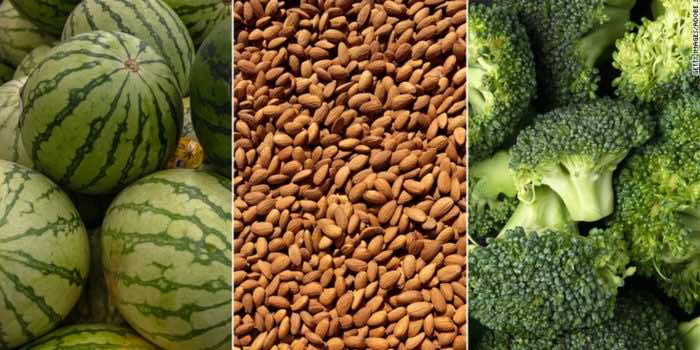Bees, bats, and monarch butterflies are endangered and declining at an exponential rate.
They are all pollinators. Without them, fruits, vegetables, and other plants wouldn’t be pollinated, and it can disrupt our food supply.
Apples, melons, cranberries, pumpkins, squash, broccoli, and almonds are among the foods most susceptible to pollinator decline, according to the Food and Drug Administration.
“It’s all so intricately connected, whether you’re eating the food that is directly pollinated or you’re eating something that depends on that pollinator,” Magill said. “It’s a domino effect.”
The Climate crisis has made it more difficult for pollinators.
A UN report in 2019 found that a million species are at risk of extinction in the coming decades, as the climate crisis accelerates. Magill says we’re starting to see that play out in insect populations.
“One million species in the next 50 years,” Magill said. “That is catastrophic.”
Scientists at the International Union for Conservation of Nature last month added the monarch butterfly to its red list of endangered species.

“Climate change has significantly impacted the migratory monarch butterfly and is a fast-growing threat; drought limits the growth of milkweed and increases the frequency of catastrophic wildfires, temperature extremes trigger earlier migrations before milkweed is available, while severe weather has killed millions of butterflies,” scientists reported.
Honeybees began to show an alarming decline in 2006. From April 2020 to April 2021, beekeepers in the US lost around 45% of their colonies, according to Auburn University’s College of Agriculture, which reports that the average acceptable turnover is around 20%.
Magill noted that while these declines are happening gradually, they will eventually be too great for ecosystems to make up for.
“You know, what is the straw that is going to break the camel’s back when it comes to the balance of the environment?” Magill said.
Bats also play an integral role in food security. The USDA points out that bats eat enough pests to save more than $1 billion per year in crop damage and pesticide costs in the United States. They are also pollinators.
“Across all agricultural production, consumption of insect pests by bats results in a savings of more than $3 billion per year,” according to the US Fish and Wildlife Service.

“You wouldn’t have tequila if you had no bats, because that’s the only thing that pollinates the agave plant that makes tequila,” Magill said.
Bats are affected by the climate crisis in the same way butterflies and bees are.
“Bats are also more susceptible to heat stress,” Magill said. “There have been major die-offs of bats as a result of rising temperatures that led to death from heat stroke as bats have limited cooling mechanisms.”
A new online database helps users in the UK find pollinator-friendly plants for their gardens and supports biodiversity.
“When you plant native wildflowers, you’re planting a buffet for the wildlife that needs that to survive,” Magill says. “That’s the refueling stations for our pollinators.”

“We have beautiful plant life in our native areas where we live in this country. If we could focus more on that and start rebuilding what was naturally here, we can start bringing back those natural rhythms.”
Individual households can also work to reduce their pesticide and chemical use around their homes.


